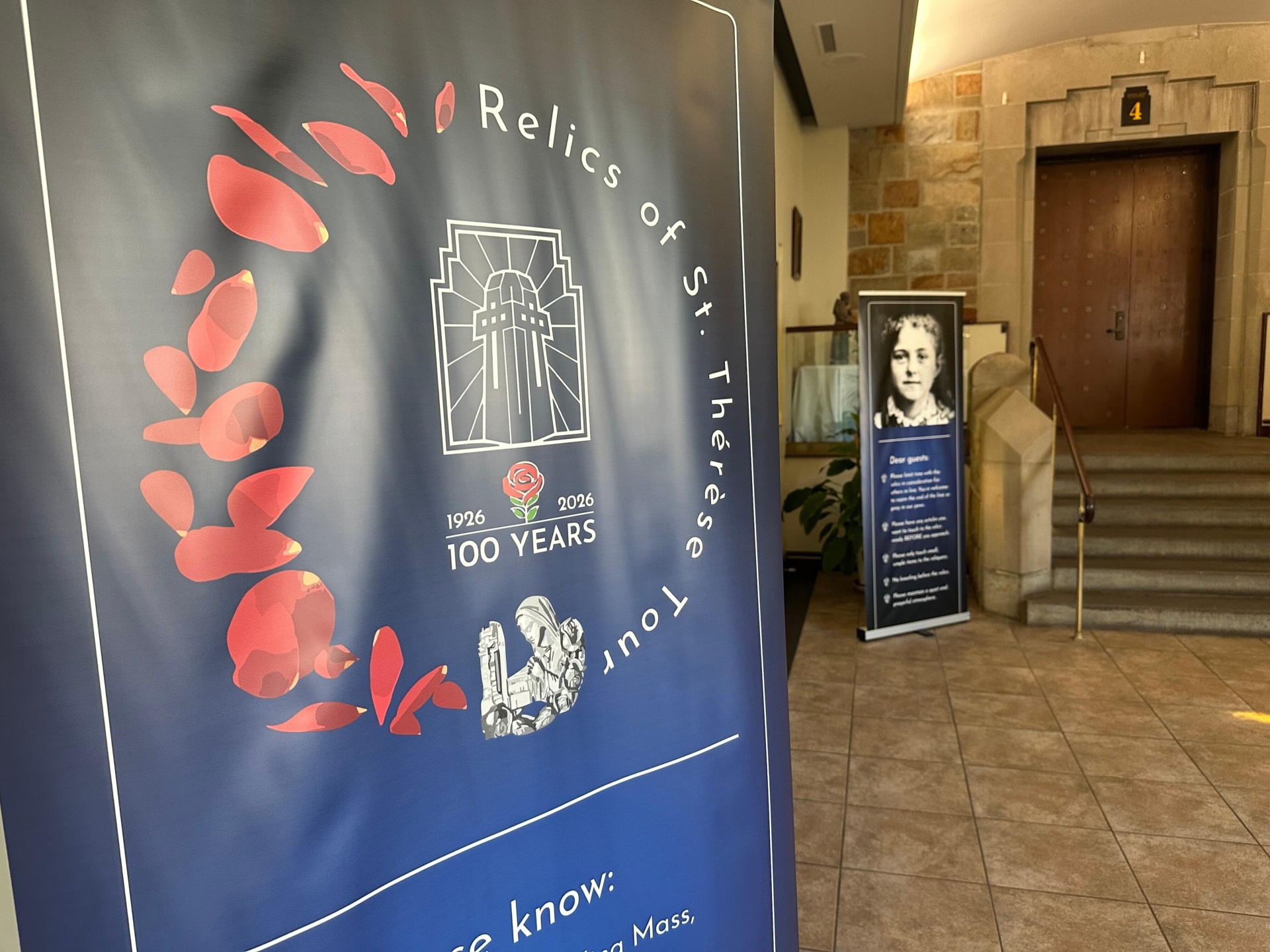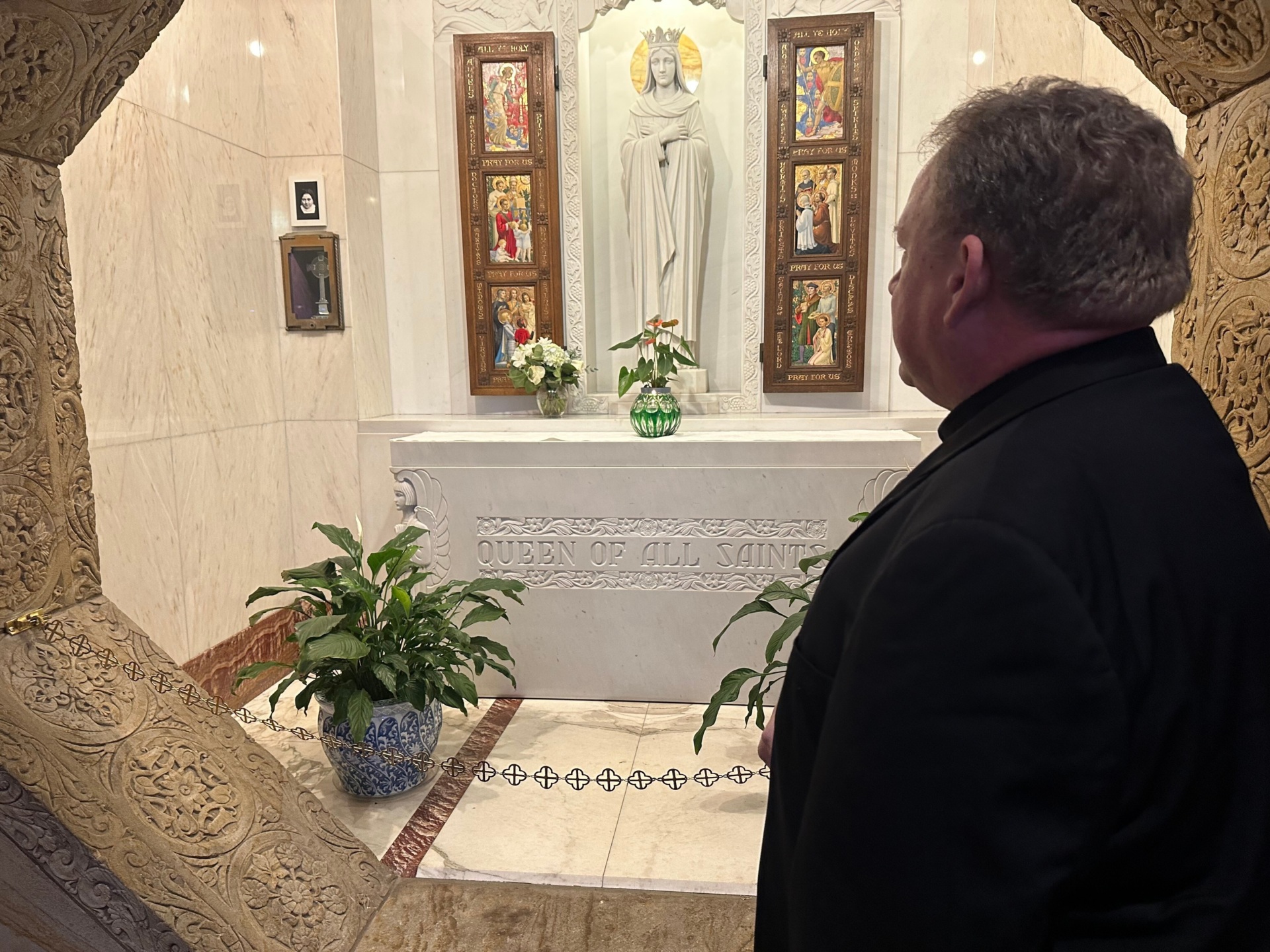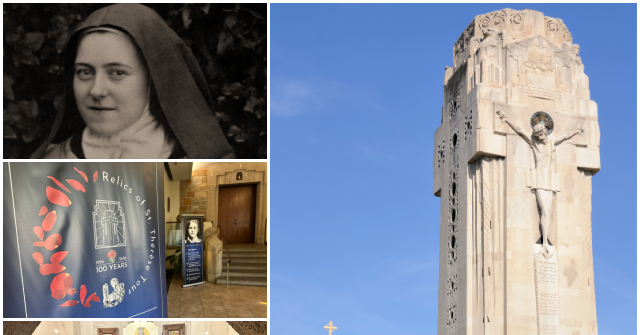A reliquary containing some of St. Thérèse’s remains began its U.S. tour at the National Shrine of the Little Flower Basilica in Royal Oak, Michigan. The tour is meant to coincide with the centennial of the saint’s canonization in 1925.
Nicole Scheier was among those who arrived hours ahead of the first opportunity to catch a glimpse of the relics of St. Thérèse of Lisieux.
“St. Thérèse is a saint for everybody. She is relatable. She teaches that sainthood is attainable, doing small things with great love,” Scheier said after pausing before a statue of St. Thérèse outside the National Shrine of The Little Flower Basilica.

The National Shrine of the Little Flower Basilica in Royal Oak, Michigan, a suburb of Detroit. (Getty Images)
St. Thérèse’s remains will be on display at the Michigan parish through October 8, before moving on to California. Other stops on the tour, which runs into December, are Arkansas, Florida, Louisiana, Maryland, Missouri, Texas, Wisconsin, and Washington, DC.
Haifa Gabbara also arrived at the basilica well in advance. “St. Thérèse means a lot to me and to my family,” the West Bloomfield Township resident said. “So, I was determined to be here, although early.”

Nicole Scheier pays her respects to a statue of St. Thérèse outside the National Shrine of The Little Flower Basilica on October 1, 2025, in Royal Oak, Michigan. (AP Photo/Mike Householder)
The National Shrine of the Little Flower Basilica — whose iconic stone steeple is a landmark on metro Detroit’s famous Woodward Avenue — was founded as a parish in 1926. It was one of the world’s first parishes dedicated to the French saint who died of tuberculosis in 1897 at age 24 and was canonized by Pope Pius XI in 1925.
Called “The Little Flower of Jesus,” St. Thérèse was born Thérèse Martin in 1873 and joined the Carmelite convent in Lisieux, France. Though she died young and never left her convent, she became renown worldwide after her death due to her posthumous autobiography, The Story of a Soul. In her book, she explained how the path to God can be found through “the little way” of love and devotion to Jesus and other people. This, she wrote, is the way that those who, like herself, are “little” or unimportant in the eyes of the world can achieve sainthood.
“I will seek out a means of getting to Heaven by a little way – very short and very straight little way that is wholly new. We live in an age of inventions; nowadays the rich need not trouble to climb the stairs, they have lifts instead. Well, I mean to try and find a lift by which I may be raised unto God, for I am too tiny to climb the steep stairway of perfection,” St. Thérèse wrote in The Story of a Soul. “Thine Arms, then, O Jesus, are the lift which must raise me up even unto Heaven. To get there I need not grow. On the contrary, I must remain little, I must become still less.”
“Our Lord does not look so much at the greatness of our actions, nor even at their difficulty, but at the love with which we do them,” she explained.

St. Thérèse of Lisieux seen in 1888 (left) before entering the convent and in 1894 (right) after becoming a Carmelite nun. (Getty Images)
Her theology of “the little way” earned her the distinction of being a Doctor of the Church, an honor recognizing a significant contribution to Catholic theology. Her “little way” also inspired millions of Christians — including a number of saints — to find holiness. One such saint was Mother Teresa of Calcutta, who took St. Thérèse’s name when she entered religious life and said that the French saint’s “little way” inspired her to serve the poor in India.
St. Thérèse’s relics last toured in the United States in 1999. Tens of thousands visited Royal Oak that year during a one-day stay. Now, a quarter-century later, they are back in Michigan for The Little Flower’s feast day on October 1, as the Church commemorates the one hundred year anniversary of her canonization.
“It feels like Christmas morning that a wonderful gift from God is coming here to be with us,” said the Rev. John Bettin, the rector of the National Shrine of The Little Flower Basilica.

A sign welcomes visitors to the Relics of St. Thérèse Tour inside the National Shrine of The Little Flower Basilica on September 30, 2025, in Royal Oak, Michigan. (AP Photo/Mike Householder)

The Rev. John Bettin, rector of the National Shrine of The Little Flower Basilica, looks at a relic of St. Thérèse of Lisieux inside the basilica on September 30, 2025, in Royal Oak, Michigan. (AP Photo/Mike Householder)
In the Catholic tradition, a relic is an object, notably part of the body or clothes, that serves as a memorial of a departed saint. It is an ancient tradition within the Church to venerate, or honor, the relics of holy people.
The Associated Press contributed to this story.
Breitbart News
Read the full article .


